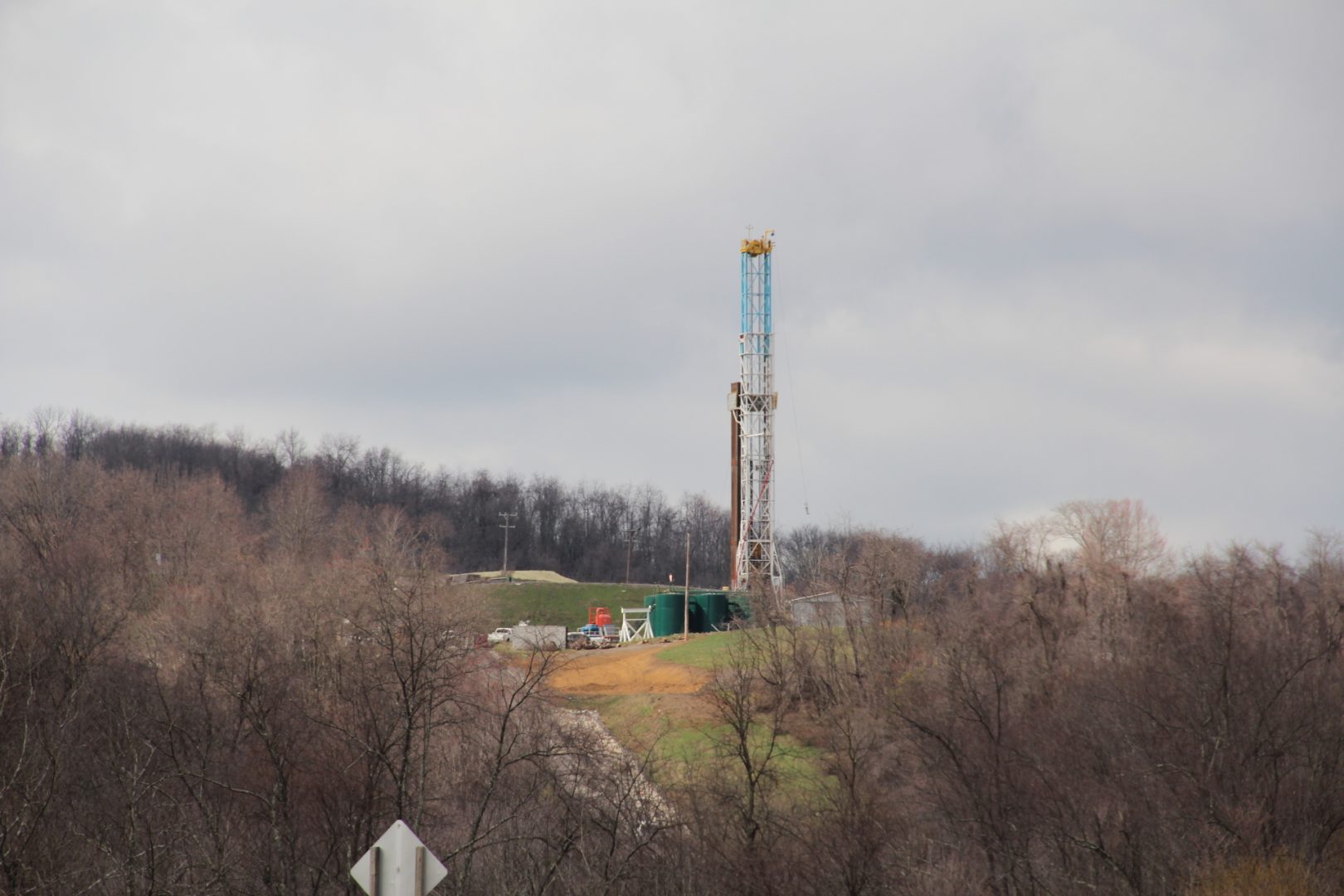
A natural gas drilling rig in Greene County, Pa. in 2016.
Reid R. Frazier / StateImpact Pennsylvania


A natural gas drilling rig in Greene County, Pa. in 2016.
Reid R. Frazier / StateImpact Pennsylvania

Reid R. Frazier / StateImpact Pennsylvania
A natural gas drilling rig in Greene County, Pa. in 2016.
Pennsylvania gas drillers saw a drop in production in 2022. It’s the first year-over-year decrease since fracking took off in the state more than a decade ago.
The Department of Environmental Protection’s latest Oil and Gas Annual Report shows drillers produced 7.5 trillion cubic feet of gas last year. That’s down from 7.6 trillion cubic feet in 2021.
That’s even though companies drilled about 140 more wells in 2022 than they did the year before – 790 compared to 648 in 2021.
Previous reports from the state’s Independent Fiscal Office have noted quarterly slowdowns in production growth, as well as the disparity between the number of new wells and production volume. The IFO says it shows that newer wells are not offsetting the decline of production in older wells.
DEP staff set a record for the number of inspections in 2022 with 39,648. They found 8,010 compliance violations, about 600 fewer than in 2021.
Conventional drillers were responsible for about two-thirds of the violations. Conventional drillers are often smaller companies. They produce less oil and gas with vertical drilling than unconventional drillers do with fracking.
Inspectors found 5,149 health and safety violations across conventional and unconventional sites. Of those, 1,155 were not tied to a specific well.
Unconventional drillers were responsible for 1,273 health and safety violations for issues including leaks of gas and drilling fluids, improper construction of the well, and waste mismanagement.
Conventional wells accounted for 2,721 of health and safety violations, including 671 notices for failing to plug a well at the end of its useful life.
Unplugged wells allow more planet-warming methane to enter the atmosphere.
DEP estimates there are at least 200,000 orphan wells in the state. Those are wells that were drilled and left behind before modern regulations. DEP has documented about 27,000 orphan and abandoned wells on state and private land. The agency estimates it would cost $1.8 billion to plug all of the known wells.
The state collects fees on permits for new wells that are used to fund well-plugging efforts, but DEP says they “are grossly insufficient to cover the cost of properly plugging all orphan and abandoned wells that currently exist in Pennsylvania.”
Federal money is available to plug orphan wells, thanks to 2021’s infrastructure spending plan. DEP says Pennsylvania could get more than $300 million for its cleanup efforts.
DEP collected the lowest amount in fines and penalties of the last five fiscal years with $1.7 million.
StateImpact Pennsylvania is a collaboration among WITF, WHYY, and the Allegheny Front. Reporters Reid Frazier, Rachel McDevitt and Susan Phillips cover the commonwealth’s energy economy. Read their reports on this site, and hear them on public radio stations across Pennsylvania.
(listed by story count)
StateImpact Pennsylvania is a collaboration among WITF, WHYY, and the Allegheny Front. Reporters Reid Frazier, Rachel McDevitt and Susan Phillips cover the commonwealth’s energy economy. Read their reports on this site, and hear them on public radio stations across Pennsylvania.
Climate Solutions, a collaboration of news organizations, educational institutions and a theater company, uses engagement, education and storytelling to help central Pennsylvanians toward climate change literacy, resilience and adaptation. Our work will amplify how people are finding solutions to the challenges presented by a warming world.